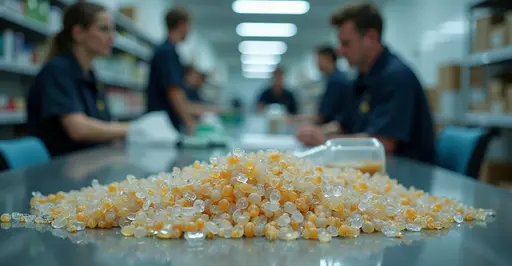
New Research Uncovers Aviation Pollution Source
A groundbreaking 2025 study has identified commercial air travel as a significant contributor to microplastic pollution. Researchers discovered that cabin air filters in airplanes release synthetic fibers during flights, adding to the growing global microplastic crisis.
How Aircraft Spread Plastic Particles
The research team analyzed air samples from multiple aircraft cabins and found that high-efficiency particulate air (HEPA) filters shed microscopic plastic fibers during normal operation. These filters, made from woven synthetic materials like polyester and polypropylene, degrade over time due to air pressure changes and mechanical stress, releasing particles into the cabin environment.
"We detected microplastic concentrations up to 50 particles per cubic meter of cabin air," stated lead researcher Dr. Emma Chen. "Long-haul flights showed particularly high levels as filters work continuously for extended periods."
The Microplastic Pathway
Once airborne, these microplastics follow two primary pathways:
- Passengers and crew inhale particles during flights
- Fibers exit aircraft during cabin cleaning and maintenance
From airport environments, wind dispersal carries microplastics into surrounding ecosystems. The study notes these particles eventually enter waterways and soil, joining microplastics from other sources like synthetic clothing (35% of ocean microplastics) and degraded plastic waste.
Health and Environmental Implications
Microplastics pose dual threats:
Human Health Concerns
Aviation workers and frequent flyers face highest exposure risks. Inhaled microplastics can penetrate lung tissue, potentially causing inflammation and carrying toxic additives like phthalates. While long-term health impacts require further study, the European Respiratory Journal has documented preliminary links to respiratory issues.
Ecosystem Impact
Microplastics accumulate in terrestrial and aquatic environments, entering food chains. Research shows these particles absorb pollutants like pesticides and transport them to new environments. Marine organisms often mistake microplastics for food, leading to internal injuries and bioaccumulation up the food chain.
Industry Response and Solutions
The aviation industry faces mounting pressure to address this issue:
- Airbus and Boeing are testing alternative filter materials including plant-based composites
- The International Air Transport Association (IATA) is developing new filter maintenance protocols
- EU regulators are considering microplastic emission standards for aircraft
Dr. Chen recommends: "Replacing filters more frequently could reduce fiber shedding by 40%. But we ultimately need redesigned filtration systems that don't rely on plastic materials."
Passenger Recommendations
While solutions develop, travelers can:
- Stay hydrated to support natural particle clearance mechanisms
- Consider wearing masks on long flights (N95 filters 95% of particles >0.3 microns)
- Support airlines investing in sustainable cabin upgrades
This study highlights an overlooked environmental cost of air travel and underscores the pervasive nature of plastic pollution in modern life.

 Nederlands
Nederlands
 English
English
 French
French
 Deutsch
Deutsch
 Espaniol
Espaniol
 Portugese
Portugese








